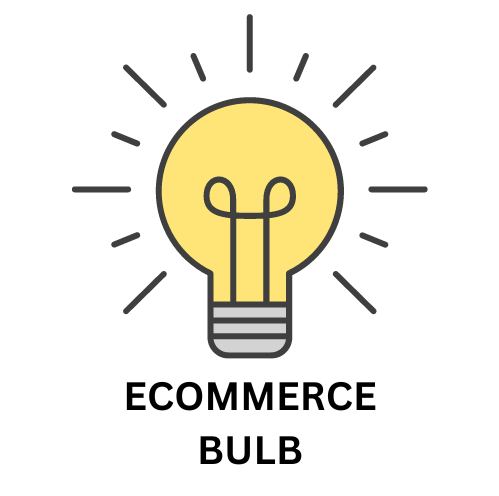In this blog post we’re going to discuss Optimizely Performance Report setup and other related issues with Optimizely reporting.
Custom performance reports in Optimizely:
Creating custom performance reports in Optimizely allows you to analyze data from various sources and gain insights into customer behavior. Here’s a quick guide to get you started:
- Navigate to Reports:
- Go to Company > Reports in your Optimizely Data Platform (ODP) account.
- Click on New Report.
- Set Up Your Report:
- Expression Filter: Define the events that must match the expression to be included in the report.
- Date Range: Refine the results by selecting a specific date range.
- Simple Filter: Choose a field and specify a value to filter events.
- Time-Series Graph: Select how the date range displays on the x-axis (Hour, Day, Week, or Month).
- Report Table: Customize the columns to display the results of your filters.
- Save and Share Your Report:
- Click Save > Save as New Report to name and set the visibility of your report (Account, Scope, or Personal).
- To share, you can export the report or copy it to another account.

Optimizely Performance Report Tutorial:

Creating performance reports in Optimizely can help you gain valuable insights into your experimentation data. Here’s a step-by-step tutorial to guide you through the process:
Step 1: Access Optimizely Reporting
- Log in to your Optimizely account.
- Navigate to the Reporting section from the main dashboard.
Step 2: Create a New Report
- Click on New Report.
- Choose the type of report you want to create (e.g., Experimentation, Feature Experimentation).
Step 3: Configure Your Report
- Select Metrics: Choose the metrics you want to track (e.g., conversion rates, engagement metrics).
- Apply Filters: Set filters to narrow down the data (e.g., date range, specific experiments).
- Customize Visualization: Select how you want the data to be visualized (e.g., bar charts, line graphs).
Step 4: Save and Share Your Report
- Click Save to store your report.
- To share, you can export the report as a PDF or CSV file.
Additional Resources
- Optimizely Reporting for Experimentation: Detailed guide on using Optimizely’s reporting features.
- Video Tutorials: Watch video tutorials for a visual guide.

How to set up Optimizely Reports?

Setting up Optimizely reports requires understanding the platform’s experimentation capabilities and setting up the necessary tracking and analytics to gain actionable insights. Below is a step-by-step guide:
Step 1: Access the Reporting Dashboard
- Log in to your Optimizely account.
- Navigate to the Dashboard of the experiment or campaign you want to analyze.
- Locate the Reports section, which provides data for the experiment’s performance.
Step 2: Define Goals
- Determine Metrics:
- Specify the key performance indicators (KPIs) you want to track, such as conversions, clicks, revenue, or engagement.
- Set up goals in Optimizely:
- Go to the experiment’s settings and define the goals (e.g., pageviews, button clicks, custom events).
- Ensure the goals align with your overall business objectives.
Step 3: Configure Experiment Tracking
- Install the Optimizely Snippet:
- Add the JavaScript snippet to your website or application to enable tracking.
- Integrate Analytics (if needed):
- Integrate third-party analytics tools like Google Analytics, Adobe Analytics, or Segment for advanced insights.
- Set Event Tags:
- Use event tags to track specific actions on your website.
Step 4: Segment Your Audience
- Define audience segments:
- Filter reports by device, location, traffic source, or other criteria.
- Use segments to understand how different groups interact with your experiment.
- Create Custom Segments (if necessary):
- Utilize custom attributes to fine-tune audience insights.
Step 5: Monitor Experiment Performance
- Go to the Results Page:
- View performance data for each variation of your experiment.
- Use the Statistical Significance Calculator:
- Optimizely automatically calculates statistical significance to indicate if the results are reliable.
- Analyze metrics like:
- Conversion rate
- Lift percentage
- P-value
Step 6: Customize Report Views
- Add Filters:
- Apply filters for specific date ranges, audiences, or devices.
- Adjust Visualization:
- Choose from charts, tables, or detailed numerical views for better interpretation.
Step 7: Export and Share Reports
- Download Reports:
- Export reports in PDF or CSV format for offline analysis.
- Share Insights:
- Use built-in sharing features to provide stakeholders access to key metrics.
Tips for Effective Reporting
- Automate Reports:
- Schedule automated reports for consistent updates.
- Use Integrations:
- Sync with tools like Tableau or Power BI for advanced reporting.
- Compare Across Campaigns:
- Benchmark experiments against previous results to identify trends.

Optimizely Performance Tracking Guide:

To effectively track performance in Optimizely, follow this comprehensive guide:
Step 1: Set Up Event Tracking
- Log in to your Optimizely account.
- Navigate to the Events section from the main dashboard.
- Click on Create New Event.
- Define the event by specifying the event name, category, and action.
Step 2: Implement Tracking Code
- JavaScript Snippet: Add the Optimizely tracking snippet to your website’s code. This snippet will capture events and send data back to Optimizely.
- Custom Events: Use custom JavaScript to track specific user interactions, such as button clicks or form submissions.
Step 3: Configure Goals
- Go to the Goals section.
- Click on Create New Goal.
- Define the goal by selecting the event you want to track and setting the conditions for the goal.
Step 4: Analyze Data
- Access the Reports section to view performance data.
- Use filters to narrow down the data by date range, experiment, or audience segment.
- Visualize the data using charts and graphs to identify trends and insights.
Additional Resources
- Optimizely Performance Edge Guide: Learn how Optimizely Performance Edge works to deliver faster web experiments.
- Event Tracking Overview: Best practices for tracking events in Optimizely.

Optimizely reporting best practices:

To get the most out of Optimizely’s reporting features, here are some best practices to follow:
1. Define Clear Goals
- Identify Key Metrics: Determine which metrics are most important for your business objectives (e.g., conversion rates, engagement metrics).
- Set Benchmarks: Establish baseline metrics to compare against future performance.
2. Use Segmentation
- Audience Segmentation: Break down your data by different audience segments to understand how different groups respond to your experiments.
- Behavioral Segmentation: Analyze data based on user behavior to identify patterns and trends.
3. Customize Reports
- Tailor Visualizations: Use charts and graphs that best represent your data for easy interpretation.
- Filter Data: Apply filters to focus on specific time periods, experiments, or user segments.
4. Regularly Review and Update
- Frequent Analysis: Regularly review your reports to stay updated on performance and make timely adjustments.
- Iterate and Improve: Use insights from your reports to refine your experiments and strategies.
5. Share Insights
- Collaborate with Teams: Share reports with relevant stakeholders to ensure everyone is aligned on performance and insights.
- Export and Present: Export reports in formats like PDF or CSV for presentations and detailed analysis.
Additional Resources
- Optimizely Reporting for Experimentation: Detailed guide on using Optimizely’s reporting features.
- Optimization Methodology: Best practices for setting up and running experiments.

Custom Performance Reports in Optimizely:

Creating custom performance reports in Optimizely allows you to analyze data from various sources and gain insights into customer behavior. Here’s a quick guide to get you started:
Step 1: Access the Reporting Section
- Log in to your Optimizely account.
- Navigate to Company > Reports.
Step 2: Create a New Report
- Click on New Report.
- Choose the type of report you want to create (e.g., Experimentation, Feature Experimentation).
Step 3: Configure Your Report
- Expression Filter: Define the events that must match the expression to be included in the report.
- Date Range: Refine the results by selecting a specific date range.
- Simple Filter: Choose a field and specify a value to filter events.
- Time-Series Graph: Select how the date range displays on the x-axis (Hour, Day, Week, or Month).
- Report Table: Customize the columns to display the results of your filters.
Step 4: Save and Share Your Report
- Click Save > Save as New Report to name and set the visibility of your report (Account, Scope, or Personal).
- To share, you can export the report or copy it to another account.
Additional Resources
- Optimizely Reporting for Experimentation: Detailed guide on using Optimizely’s reporting features.
- Video Tutorials: Watch video tutorials for a visual guide.


Leave a Reply